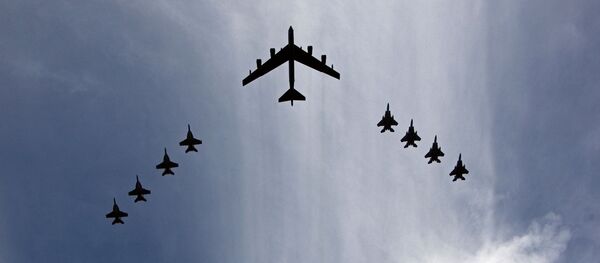The aircraft would add significant offensive capability to the People's Liberation Army Air Force.
Images of the new aircraft emerged on several Chinese military web pages, including a December 21 video report on the popular Ifeng web page.
Noteworthy modifications include two new wingtip pods, similar to the Northrop Grumman AN/ALQ-218 Tactical Jamming Receiver, IHS Jane’s reported. These new features have drawn comparisons to the E/A-18G Growler attack variant of Boeing's Super Hornet.
The purported J-16 EW prototype appears to lack the common fuselage-mounted gun. An infrared search and tracking system also appears to be missing. But the J-16, which resembles the Russian Sukhoi Su-30, would have up to 10 wing and fuselage hardpoints for ordnance and active jamming pods, IHS Jane’s reported.
The PLA is known to have developed three tactical electronic warfare pods. The first, similar in size to the EDO Corporation AN/ALQ-99, may come in receiver and transmitter versions, similar to those first seen on Xian Aircraft Corporation JH-7 strike fighters in 2007, IHS Jane’s reported. A smaller KG600 pod also equips JH-7s, while the KG300 appears to be an export variant.
An EW version of the J-16, equipped similarly to the E/A-18G, would give PLAAF strike packages a far greater chance of reaching their targets and avoiding increasingly accurate air defenses, according to IHS Jane’s.
Development of a J-16 EW variant could also lead to a similar carrier warfare version of the twin-seat J-15S.
Chinese experts note that just as the Growler enables US air forces, an active jamming version of the J-16 would allow the PLAAF to decrease its dependence on large and vulnerable electronic support aircraft based on the Shaanxi Y-8 airframe.
In early 2014, an Asian government source estimated that 100 J-16s would be in PLA service by 2020, but the emergence of an electronic warfare version could increase that number, IHS Jane’s reported.




